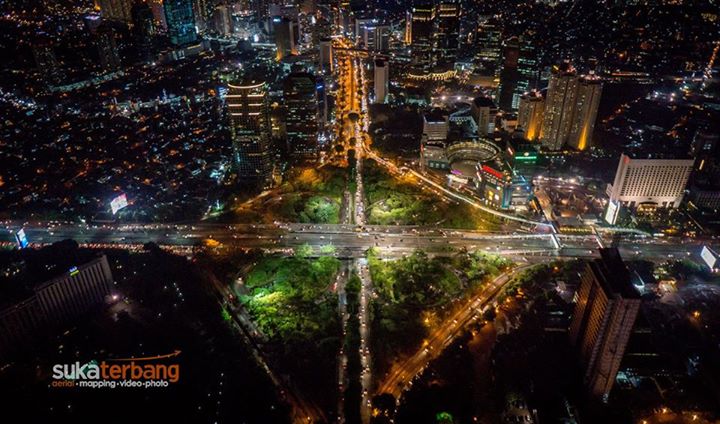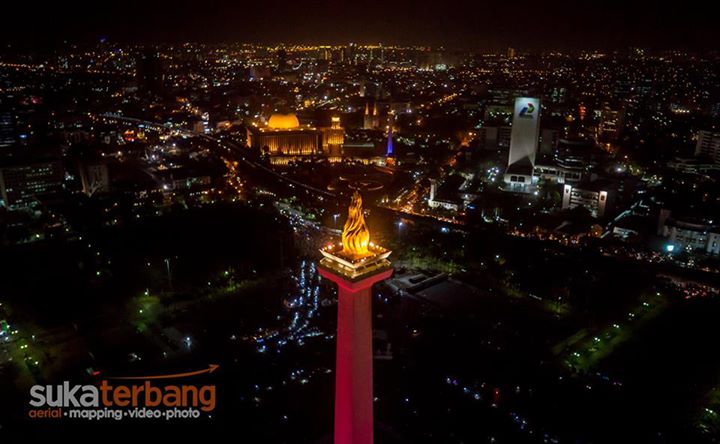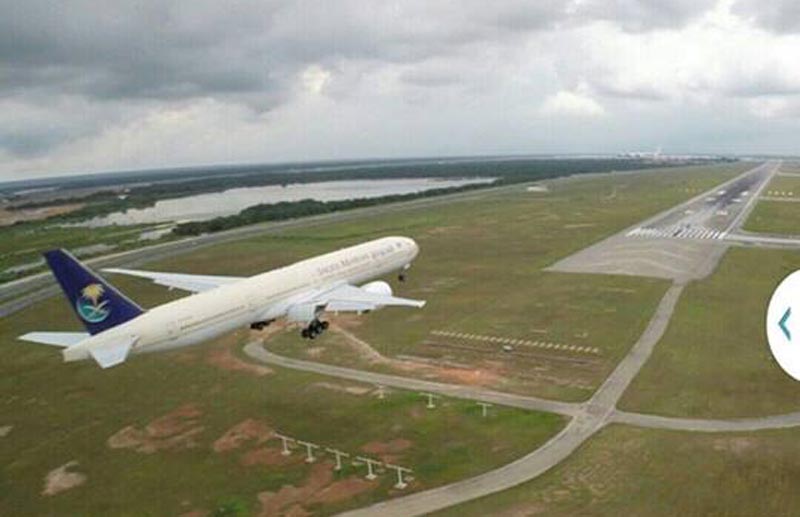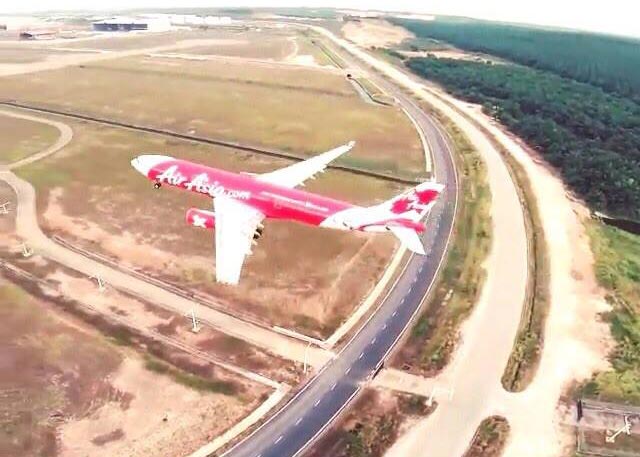It looks like my blog this week is mostly covering Malaysia with the upcoming 1st anniversary of MH370’s disappearance. However, I certainly didn’t expect to see this:
It’s been circulating around Social Media and I read about it last night, and today it has hit the headlines.
All I can say is, there are good drone users, and there are bad drone users, and then there are idiots with drones. You can guess which one I categorize this drone-flyer.
First it is common sense to NOT fly your drone near any airport. If it hits an aircraft, you’d for sure lose the drone and you’d be lucky if it doesn’t cause damage to the aircraft. Let’s not start with what happens if the drone gets into an engine. And oh, yes, if your drone gets caught up in wake turbulence and crashes, make sure you don’t sue the damn airline or airport! Idiot!
Secondly, as a owner of a flying machine (albeit an unmanned one), a non-idiot drone flyer should always check with the local regulations. In Malaysia, it is prohibited to fly unmanned aerial aircraft weighting under 20kg within an aerodrome traffic zone (which does include short final approach areas of the airport).
Thirdly, if you do fly your drone at an airport, make sure you coordinate and obtain permission. Like the video in this article: When the Quadcopter goes to the airport!
While there are presently no regulations covering drones in Indonesia, last year while at the charter company I was working at, I did raise the issue of drones and it’s risk to low-level helicopter operations, and I issued the following (excerpts only):
- Unmanned Aerial Systems (UAS)
- Types of Unmanned Aerial Systems covered in this document include but are not limited to: Drones, Quadcopter, Hexarotors, Small Motor-Glider, and mini-helicopters.
- Use of these UAS has been growing over recent years.
- Use of these UAS are not regulated by any flight safety regulations.
- TV stations are now using these UAS either directly, or through 3rd party operators.
- UAS Operations
- These UAS are not regulated by any government regulatory agencies and there are no coordination with air traffic control, therefore THESE UAS POSE A REAL AND PRESENT THREAT to our helicopter flight missions.
- Most of these drones operate under 400ft, but are operating more frequently in the 400ft – 1000ft AGL range. There are some reports of these systems operating above 1000ft.
- There are no known reports of near-misses of aircraft with these UAS in Indonesia.
- In the US, near misses of low-flying aircraft (in particular) helicopters are becoming increasingly frequent.
- UAS Commercial Crew Operations
- UAS deployments usually operate with a crew consisting of at least 1 pilot and 1 camera operator.
- UAS are increasingly piloted using “First Person Viewer” (FPV) goggles.
- The use of FPV means the UAS pilot no longer have area situational awareness as the field of vision is limited.
- UAS Lights/Lighting
- Lights on the UAS do not conform to the same standard as aircraft.
- Many Quad-copter UAS have red and green lights, but this is confusing as the front 2 legs have red lights and the rear legs have green lights.
- Some Quad-copters or Hexarotors have blue lights (some with blue beacon lights) to identify itself as an irregular flying object.
- Due to the multi-directional capability of the UAS, avoidance maneuvre towards its green light side may cause the aircraft to fly towards the UAS.
- Action
- Crew (Pilot/Co-Pilot/Engineer On-Board/Observer)
- Crew should maintain extra vigilance and visual lookout near areas of interest.
- When flying for TV stations, always conduct a fly-over of the area prior to conducting maneuvres required by the TV crew (including but not limited to OGE hover and encircling areas of interest (eg: toll exits)).
- During the fly-over, look out for UAS that maybe in the area.
- Observe clear areas (especially suitable/designated landing sites) as they are the preferred location by UAS crew to conduct their launch/recovery operations.
- Presence of at least 1 person sitting and 1 person standing holding a box each, in an such areas with presence of suitcase sized boxes indicate a possible UAS operation within the vicinity.
- When required, ask the passengers to report presence of any flying object nearby the helicopter when in the areas of interest.
- Apply the above measures when near areas of suspected to be target areas for UAS operations by TV stations.
- Evasive Action:
- Due to the symmetrical geometry of some of these UAS, and the possibility of non-standard navigation light configuration:
- Lateral evasive action should be a 180-degree turn.
- Vertical separation should be assured throughout the evasive maneuvre.
- Due to the symmetrical geometry of some of these UAS, and the possibility of non-standard navigation light configuration:
- Report:
- UAS within close proximity to aircraft: REPORT TO ATC IMMEDIATELY, immediately report to Company Operations thereafter.
- UAS operating above 400’ AGL: REPORT TO ATC IMMEDIATELY, immediately report to Company Operations.
- UAS operating below 400’ AGL and do not pose immediate danger to aircraft, report to Company Operations when practical.
- Crew (Pilot/Co-Pilot/Engineer On-Board/Observer)
The above may be crude, but it was the first one in place in Indonesia to deal specifically with drones/UAV/UAS.
Airlines and airports (especially those in Indonesia) should create policies and procedures regarding encounters with these drones in-flight. Bear in mind that most commercial drone operations do take safety measures and that commercial drone operations with good safety measures/policies/procedures should be considered partners in policy/procedure developments. Most recreational drone users are also aware of the safety aspects and conduct their drone flights in a similar fashion to general recreational radio-controlled aircraft.
For those drone operators in Indonesia interested in conducting safe drone operations (commercial or recreational), should contact SukaTerbang, a commercial drone operator who in my opinion possess good safety awareness of their operations, and are willing to assist others in how to be safe with their drones. These guys have covered the Presidential Inauguration, and other events, with coordination with security officials. Hey, they even have observers looking out for low level air traffic when they’re flying their drones in areas with known air traffic, and they assisted in me formulating the above policy/procedures. They are also looking for those interested in joining/forming a Drone/UAV operators association and develop best practices for both commercial and recreational users.
They mark a stark contrast to the guy who flew the drone next to KLIA. Get the right permissions and you can get amazing pictures and footages like:
and:
Get the right mindset, and the right permissions, and you shall be rewarded!





great article for indonesian,to be more aware of the right regulation